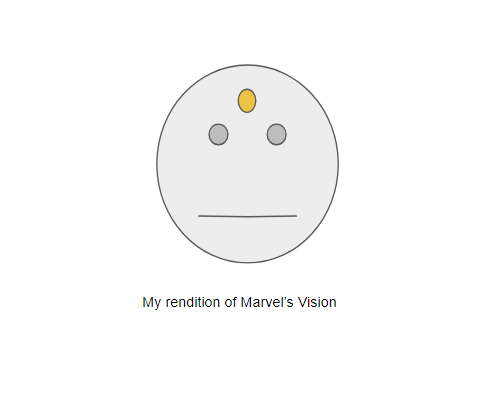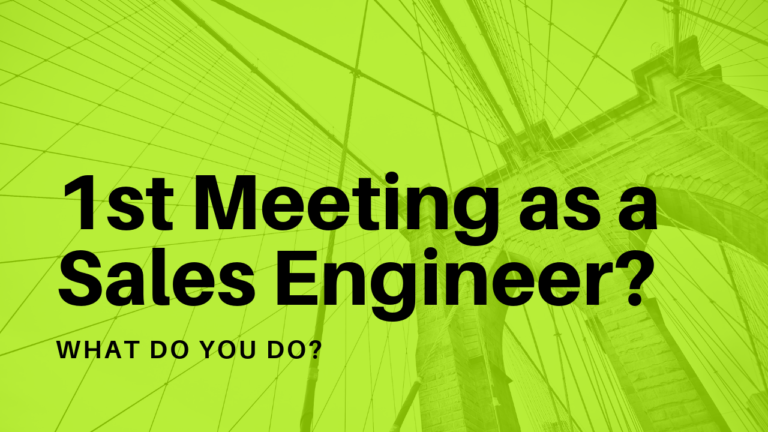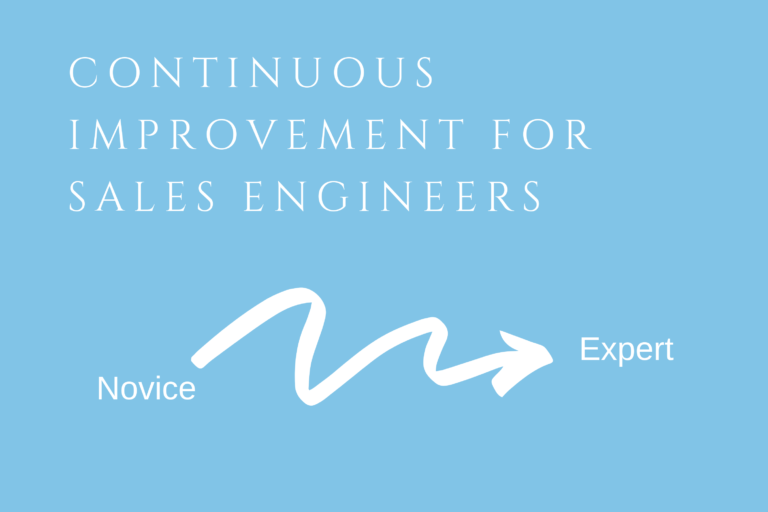Helping the customer build his own vision

By Ramzi Marjaba
I’ve mentioned building a vision on a few different occasions. In this post, I’d like to discuss what I mean by that, and how we, as SEs, can help a customer build a vision to use our solution to solve their problem. Note that this is something that I learned from Tim O’Connor during out sales training.
What is a vision?
Vision is a character in the Marvel comic books, but that’s not what I’m talking about. Vision in the Sales World is the ability to see how someone can use a solution in their environment to not only solve a pain, but to also increase efficiency, profit, downtime, or whatever metric that is important to them.

Unfortunately, building a vision is something that the customer has to do. We cannot just tell them that by buying our product, they will be able to solve all of their problems and make this much money on top of it.
A couple of years ago, I was suckered into attending a “presentation” from a vacuum cleaner salesperson. He was a nice dude, and was very respectful to my wife and I, so I suffered in silence as he proceeded to demonstrate his amazing vacuum. The pitch went something like this:
“If you have allergies, this is very useful because it doesn’t stir up the dust while you are vacuuming”
“For this amount of money per month, you can own this amazing product”
“It’s a great product for the price”
He went through all the features of this amazing vacuum cleaner. It sucks up glass, keeps your house clean, etc. Not at any point did he ask if we have allergies. He also assumed that we would agree with him that the price is great for such a product. He never asked us questions that helped us build the vision.
How do we build a vision?
Building a vision is the process that, depending on the size and complexity of the sale, can span through the discovery calls, the demonstration and even the Proof of Concept (POC). In the example of the vacuum cleaner, one meeting would have been enough for a discovery call and demp. For more complex sales, we would usually have multiple meetings.
What is the process of building a vision?
As far as the SE is concerned, the process of building a vision starts in the first meeting of the discovery process all the way through to the demo and the POC. If this is done right, the Account Manager (AM) should have no problem closing the deal afterwards. Below, I’ll have a brief description about that for each of these phases, starting with discovery.
Discovery:
During a discovery call, as you know, this is our chance to gather all pertinent information. This includes:
- The perceived problem that they are running into
- An attempt at uncovering what the actual problem is if we think that it might be different from the perceived problem.
- Uncover any other problems that they might not be aware off
- What the consequence of these issues in terms of business is, whether it is slowing down production, costing them extra money, etc
Quick note here, if the customer invited you to solve a specific problem but you uncovered additional problems during discovery, it might be wise to park these until you solve the low hanging fruit. Use your and your AM’s judgment.
Back to building a vision. When starting the discovery call, the AM usually kicks it off by asking a very simple question: “Why did you want to see us today?” or a nicer variation of that question. This usually starts off a conversation between you, the AM, and the customer. The customer will disclose some information, but not all. You have 2 goals here as an SE:
- Uncover what their problem actually is. If it’s a networking issue, and the customer is talking about outages, you can ask questions like, do you know what is causing the outages? How many outages are you seeing on average and for how long? How is that affecting your customers, etc.
- Uncover the effect of the problem on the business. Whenever an outage happens, how does that affect you? Does it cost the company money? How does it cost the company money?
These are uncovering the pain of the customer. Now you need to build a vision of the solution. Using the same networking example above, based on the answers you were given and hopefully looking at a network design, you can ask questions such as how would having a redundant link help you? And wait for the customer to explain. Follow up on those questions in a similar fashion and have the customer explain how a possible solution would work for them. There are cases where the customer will say “well it does not help”. Then you have to look deeper into that. You are either thinking of a solution that truly does not work, or you have to look at what the customer believes the solution is, and work with them to compare, contrast and see which is better.
Once the customer sees how your solution can be helpful, then you will most likely move on to a demo. Try to schedule the demo on the spot if you have the resources.
If you are looking for an in depth resource on how that can be done, I recommend reading SPIN Selling by Neil Rackham.
Demonstration
If you collected all the information, then you are able to build a demo that is specific to the customer. Use their terminology, simulate their environment or as close to it just so they can imagine how they can implement it. Show them what they can be doing in the future, and don’t focus on the “failures” of today. If you focus on the failures, you might be insulting the person who made the decisions to get them there. Focusing on the “failures” as a scare tactic can backfire. Try to show what tomorrow would look like using your solution
Robert Riefstahl talks about this in depth in his book Demonstrating to Win
Proof of Concept
Depending on the complexity of the product, and the size of the sale, a successful demo may lead to a POC. At this point, the vision is built, you just have to prove that what you promised will actually work. Get all the information of what the customer wants to see before hand. Make sure that this is agreed upon by the customer and your team. If you don’t do that, then you open up the door for the customer to add more and more requirements as the POC is going along. Same as in the demo, make sure that the customer’s naming convention is used. In this situation, you will actually be using the customer environment. Now, if you have not fudged the truth during the discovery and the presentation, you should be good to go with the exception of the uncontrollable variables such as the customer’s environment.
What would happen if you don’t build a vision? It could go either way. If the customer already has a vision of a solution and what you provide fits it, then they may buy. They may also buy from the competition. At that point you, as an SE, just gave your customer a menu and let him choose instead of helping him choose. You provided no value other than answering technical questions whenever asked. Anyone can do that.
How do you guys help a customer see the value of your solution?
Stay in the loop
Subscribe to get our latest content by email.
Success! Now check your email to confirm your subscription.


